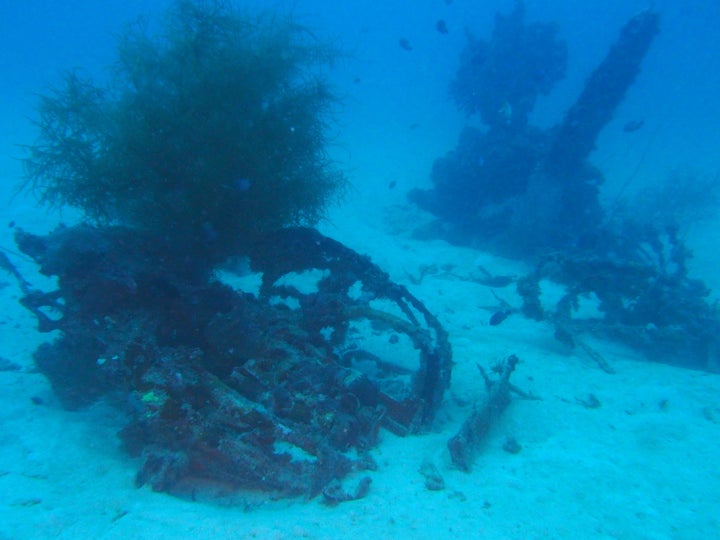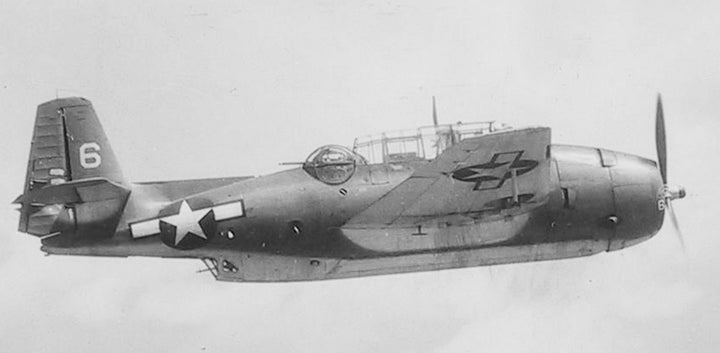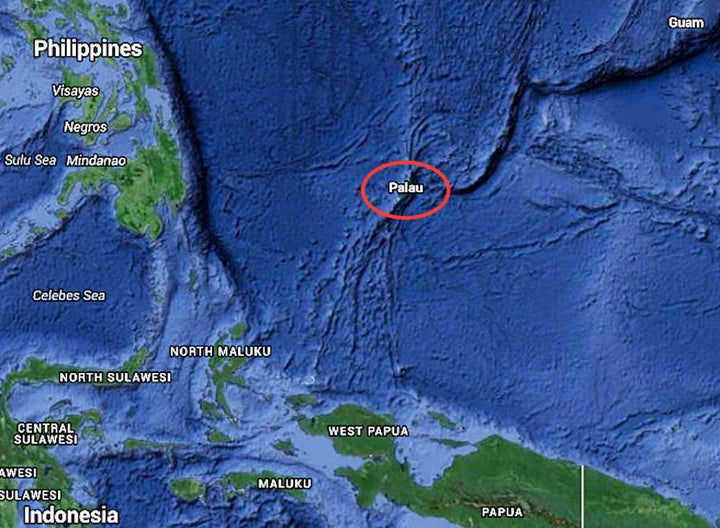
The remains of American airmen missing in action since 1944, along with wreckage from their plane, have been located on the ocean floor off the Pacific island republic of Palau.
Members of Project RECOVER, a collaborative effort to seek out the final resting places of World War II armed forces personnel, discovered the U.S. Navy TBM-1C Avenger torpedo bomber in March. However, it took a couple of months to secure the location and collect DNA samples, so they felt it was appropriate to announce the new WWII crash site as Memorial Day weekend approached.
"It was a way of saying that we do care, that Memorial Day is an important day. The two just happened to come together and it seemed to make sense to us," said Patrick Scannon, founder of the BentProp Project, one of the entities that make up Project RECOVER.
Established in 2012, Project RECOVER was co-founded by the BentProp Project, Scripps Institution of Oceanography at the University of California, San Diego, and the University of Delaware's College of Earth, Ocean and Environment. Their efforts combine science, technology and archival research to find the remains of MIAs lost among Palau's underwater coral reefs and mangrove forests.
Here is newly-released Project RECOVER video showing the Avenger's final resting place on the ocean floor, 80 feet below the surface of the water.
Pictured below is a typical three-person crew TBM-1C Avenger aircraft that saw combat during WWII.

Project RECOVER aims to locate as many MIAs as possible so that the U.S. government may bring them home for a proper burial.
"This recovery is another step closer towards Project RECOVER's goal of finding the final underwater resting places of all Americans missing in action since World War II," stated Dan Friedkin, who is chairman of the Air Force Heritage Flight Foundation and provides financial backing for Project RECOVER. "Every family member impacted by the loss of a service member deserves this type of closure."
The primary search region for missing-in-action American aircraft and their crews centers around Palau, located in the Pacific Ocean east of the Philippines and north of New Guinea. Scripps Institution of Oceanography estimates that there are several dozen U.S. aircraft and the remains of some 80 American MIAs in the area.

The BentProp Project has focused on this endeavor for 20 years, conducting historical and archival research to support yearly month-long searches.
"We've always limited ourselves to one area -- the republic of Palau, but that's only because there's a lot of missing aircraft there," physician and BentProp founder Scannon told The Huffington Post. "When we were thinking of a name, the first thing that came to my mind was that I always see bent propellers at these crash sites. We decided that it captured the tragedy and it just stuck."
The people involved with the BentProp Project have individual backgrounds and skills in areas crossing over aviation, archaeology, history, navigation, photography and anthropology -- all necessary ingredients to look for and find these crash sites.
Partnering with UCSD and the University of Delaware in 2012 has made even more discoveries possible.
"Since we started jointly working together, we found a total of six aircraft underwater ... and we have up to 10 MIA associated with the crashes," Scripps oceanographer Eric Terrill told HuffPost. "Five of those are U.S. aircraft, one was a Japanese airplane, and several of those aircraft have MIAs associated with them."
“Since we started jointly working together, we found a total of six aircraft underwater ... and we have up to 10 MIA associated with the crashes.”
- Eric Terrill, Scripps Institution of Oceanography at UCSD
"Many times, targets are very apparent in the sonar imagery, and others take a while to analyze the data to find the manmade objects," Terrill said. "Sonar doesn't give us a clear-cut picture, especially a lot of these wrecks that don't necessarily look like an airplane once they've broken up, as the wings get torn off and the engines get pulled off."
Yet even after 70 years, Terrill says, seawater helps preserve the remains of those lost in action. "Between DNA techniques, dental records and dog tags, there's a number of different forensic tools that the U.S. government has at their fingertips ... to do the identification process," he explained.
Pending final DNA identification of the missing Avenger crew members, the families will be notified.
"One only has to be with a family, once the remains are returned, to understand how important this is," Scannon said. "My initial thought was, 'would the families even care?' But once I started meeting them, I realized very quickly that families of MIAs never quit -- they never stop missing the person who's been taken out of their lives. Even more surprising is that second and third generation family members often have stronger feelings because they never met the person."
Scannon described what it's like when he's underwater and discovers a crash site for the first time.
"It is an arresting moment...almost like a knee jerk. I pull up and look at it and realize that we haven't found just a historically interesting site, but we've found the temporary tomb of Americans who've been missing in action for a long, long time. It is a privilege to be there and a privilege to finally study and know what happened so that the families can understand the fate of their loved ones.
"A whole bunch of different emotions crowd in all at once. My pulse goes up, I'm probably breathing faster than I should and just try to take in the moment. The thing that somehow seals it for me is I try to find one part of the plane that is as close as I can get to where the crew was and I touch that, and that moment of touching, to me, somehow seals the reality -- that I'm not just looking at it, that it's real. I think it affects all of us that way."
"Certainly, it's a national responsibility to find and recover remains from our past wars," added Terrill. "It's a great teaching moment to remind the American public about a lot of the sacrifices family members have made. For me, personally, it's been very humbling to take some of my trade craft from ocean science and ocean technology and apply it to this type of problem."

